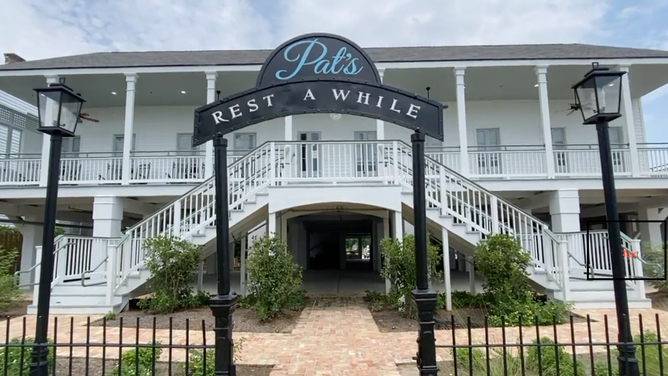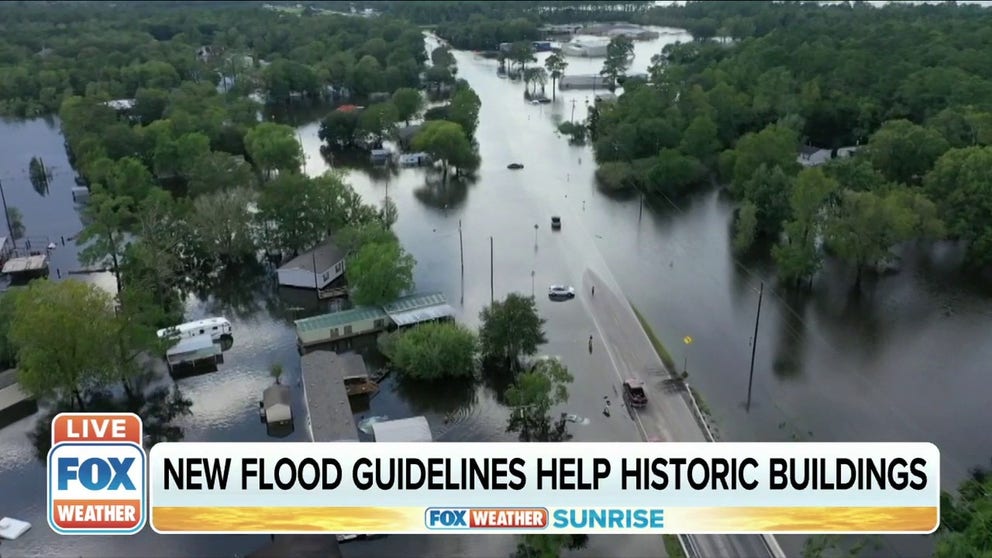National Parks Service offers new guidelines to protect historic homes in flood zones
New Orleans, one of America's most historic cities, prepares for flooding policy changes
New flood guidelines aim to help historic buildings in Louisiana
The flooding risk has long been a challenge for many historic properties, now the National Park Service has issued new guidelines to help plan for disaster.
Some communities in flood-prone areas are working with new guidelines provided by the National Parks Service on maintaining historic properties, but at the same time, homeowners are bracing for rising insurance rates from the Federal Emergency Management Agency.
In July, FEMA launched a revamp of the National Flood Insurance Program. The changes meant three-fourths of existing policyholders would see higher flood insurance bills. A changing environment increases the threat of flooding from storm surge, extreme rainfall and river flooding.
Flooding risk has long been a challenge for historical communities in Louisana, where Hurricane Ida caused damage to homes and businesses most recently.
Nathan Lott with the Preservation Resource Center of New Orleans said the NPS guidelines could help.
"One of the things that having National Park Service guidelines around flood adaptation is potentially the use of historic tax credits for structures," Lott explained. "So, you can rehabilitate a building and receive a federal tax credit provided it's a commercial building if you follow certain rules and there have been no rules about flood risk deductions."
Changing patterns, stronger hurricanes and other extreme weather events have increased the risk of flooding in frequency and magnitude.
"Historic preservation is basically keeping water out of old buildings in one way or another," Lott said.
According to Lott, almost a third of New Orleans is within a local historic district as one of the most historic cities in the country.
Those historic sites include Haden Cottage from the 1850s and Sophie B. Wright Cottage, built in 1916.

Pat's Rest A While Inn and restaurant in Madenville, Louisana.
(FOX Weather)
Barrett McGuire is the co-owner of Pat's Rest Awhile, a historic hotel and restaurant in Mandeville, Louisana, about 25 north of New Orleans.
"This is the fabric of our community. Without these structures that we remember growing up and without them being preserved, our future generations will never know where we came from and that's why it's of utmost importance and thankfully the city of Mandeville saw that need with the establishment of the historic district," McGuire said.
After Hurricane Katrina in 2005, many of Mandeville's historic homes were damaged. In response, the city created a commission to preserve historic buildings. One of the critical missions was to begin by elevating the structures.
The National Park Service heard about the plans and began working with the historical society in Mandeville to create the new flood protection guidelines.
"And so we started working through some design issues, we put together a team of local architects to start working on the architectural details of how those buildings would look," Preservation Pioneer Louisette Scott said.
Scott spent 35 years on the Mandeville city council and has worked closely on the process.
"Rarely do we go a season without any flooding, and so consequently the insurance rates, not only are people elevating because of the flood risk, but over the years we have properties that it's not uncommon to have insurance that's 15, 20 30 thousand dollars a year in flood insurance," Scott said.
FEMA's new flood risk rating impacts existing National Flood Insurance Program holders in spring 2022.
"That certainly is a concern and the insurance is really pricing, especially the local commercial restaurants and structures still on the ground and it's pricing them out of being able to survive," Scott said.
Homeowners will need to figure out how to finance their higher insurance rates.
"For a lot of people, just getting the resources together is going to be a hurdle," Lott said.
FEMA said the changes are necessary to correct inequities entrenched in the program, which covers about 5 million policyholders.
"Currently, policyholders with lower-valued homes are paying more than their share of the risk while policyholders with higher-valued homes are paying less than their share of the risk," FEMA said in a statement. "Because Risk Rating 2.0 considers rebuilding costs, FEMA can equitably distribute premiums across all policyholders based on home value and a property's unique flood risk."
